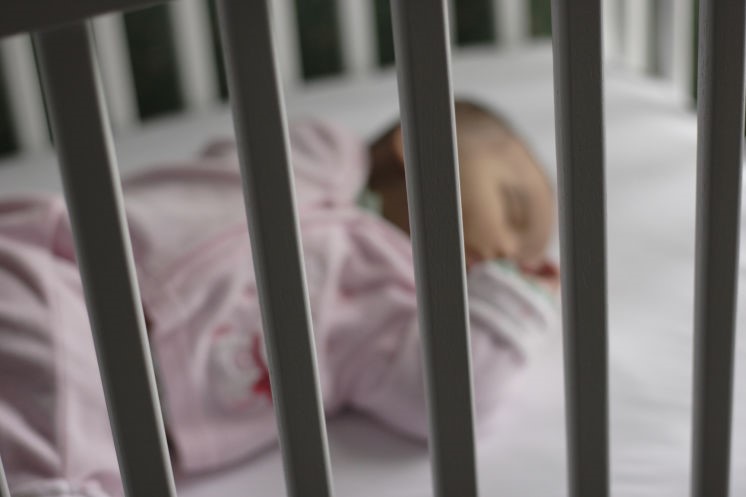

Pinellas sees spike in infant deaths from unsafe sleeping, and advocates are concerned
Tampa Bay Times published a story on the rise of infant sleep-related deaths, along with safe sleep efforts underway by the Pinellas Preventable Child Death Planning Team, supported by JWB.
So far this year, Pinellas officials have reported eight suspected sleep-related infant deaths — almost as many as all of last year. And the number has been rising, from six deaths in 2011 to nine in 2015 to 10 last year, according to Bill Pellan, director of investigations for the medical examiner’s office.
Of the eight so far in 2017, four are confirmed and four remain under investigation, more than any other county in the Tampa Bay region.
“This is a really disturbing trend,” said Mary Jo Plews, executive director of Healthy Start Coalition of Pinellas. “We are deeply concerned, and we don’t understand why we would have an increase at this point despite all our efforts. These deaths are entirely preventable.”
Since 2000, Pinellas County has not classified any infant deaths as caused by sudden infant death syndrome (SIDS). Instead, the leading cause is asphyxiation, strangulation or suffocation from unsafe sleeping practices such as co-sleeping or putting a baby to sleep on her side or in a crib with a blanket or stuffed animals.
The Pinellas Preventable Child Death Planning Team — composed of the Healthy Start Coalition, the medical examiner’s office, the Juvenile Welfare Board of Pinellas County and other organizations — has teamed up to address the issue. The Healthy Start Coalition started a Beds 4 Babies project to provide families with Pack ‘n Play cribs, which are safe sleeping alternatives, although data analysis has found that 95 percent of the babies who died had a crib or safe sleeping space available.
A lot of the information presented to parents is confusing, said April Putzulu, strategic communications manager for the Juvenile Welfare Board. The group hopes to make sure that all points of contact, from OB-GYNs to hospitals and pediatricians, are giving out consistent messages about safe sleeping practices.
Pellan, a father of three, said one of the most difficult parts of spreading safe-sleeping message is dispelling generational or cultural myths about co-sleeping or the baby’s comfort.
“People are going to listen to relatives and grandparents,” he said. “That’s the struggle we’re up against. They can hear me talk all day, but they aren’t going to change their ways. … It’s hard because you hear people say, ‘Well, I slept with my previous infant and they didn’t suffocate.’ If their first two kids were in a car seat and never died in a car crash, would they ride around with their third kid in their lap? They wouldn’t because there’s a mindset that accepts that car seats saves lives.”
Plews said the safest way for babies to sleep is for them to be placed on their backs on a firm mattress in a crib or bassinet with nothing else around — no pillows, blankets or stuffed animals. The greatest risk is for babies under 9 or 10 months. Older babies typically can flip themselves over or pick up their heads to avoid suffocation.
“Even though you and your mom and your cousins might have put babies on an adult bed, doesn’t mean it’s safe,” Plews said. “We know that these families love their babies and are devastated.”
Putzulu said as many children die during the first year of life due to suffocation from unsafe sleeping practices as die from ages 1 to 18 from all other preventable causes combined, including drowning, car accidents and guns.
This fall, the team’s initiatives will intensify, Putzulu said, with public service announcements, trainings and distribution of baby boxes — low-cost cardboard boxes with a firm mattress and fitted sheet that offers a safe sleeping option. The boxes started in Finland and have been adopted by groups in states such as Alabama, New Jersey and Ohio.
In Polk County last year, a mother was arrested after her second baby died as a result of co-sleeping. She had been warned by multiple agencies about the dangers. In most cases, however, parents are not prosecuted.
“Nobody’s intentions are bad,” Pellan said, “but these are just tragic accidents because of choices made by the parent or caregiver.”
Contact Divya Kumar at dkumar@tampabay.com. Follow @divyadivyadivya.
Tips for safe sleeping
- Always put babies to sleep alone and on their backs in their cribs, bassinets or Pack ‘n Play cribs.
- Never put babies to sleep on soft surfaces such as adult mattresses, futons, couches or air mattresses.
- Use a firm mattress and a tight-fitting sheet. Remove all blankets, toys and bumper pads. Use one-piece sleepers to keep baby warm instead of blankets.
- Parents can share a bedroom with their infants, but not the same sleeping surface, preferably until the baby turns 1 but at least for the first six months.
Sources: American Academy of Pediatrics, Juvenile Welfare Board of Pinellas County
Find original article here.
Photo courtesy of iStockphoto.com.
